Futures Forum: Artificial Intelligence: is it humanity's greatest 'existential risk'?
Especially in its potential effects on the world of work:
Futures Forum: Artificial Intelligence: 'complements labor and increase its productivity'
Futures Forum: Technological unemployment and the Luddite fallacy
These same concerns were addressed in this week's Panorama:
BBC iPlayer - Panorama - Could A Robot Do My Job?
This reflects a lot of buzz in the media currently, with scientists voicing grave concern:
How safe can artificial intelligence be? - BBC News
Stephen Hawking: 'AI could spell end of the human race' - BBC News
... and the business world generally enthusing about its potential:
AI Will Help, Not Kill Us, Says Alphabet Chairman Eric Schmidt | Digital Trends
Intelligent Machines: What does Facebook want with AI? - BBC News
Uber CEO talks UberPool profitability and AI in well-coached interview | VentureBeat | Business | by Ken Yeung
Toyota Announces Major Push Into AI and Robotics, Wants Cars That Never Crash - IEEE Spectrum
Much of this seems to be the stuff of science fiction:
Futures Forum: Climate change... and 'Interstellar': degrading soil and running out of food
Futures Forum: Climate change... and 'Interstellar': 'Cli-fi' escapism?
Futures Forum: Climate Change: the film
The top 20 artificial intelligence films - in pictures | Culture | The Guardian
Intelligent Machines: The truth behind AI fiction - BBC News
The question is to what extent these technologies represent a real step-change - and whether they will affect how we work in a revolutionary way.
Here are a couple of articles which discuss the implications of new technologies on jobs and the economy:
Brynjolfsson and McAfee: The jobs that AI can't replace
- 13 September 2015
- Technology
 Science Photo Library
Science Photo LibraryCurrent advances in robots and other digital technologies are stirring up anxiety among workers and in the media. There is a great deal of fear, for example, that robots will not only destroy existing jobs, but also be better at most or all of the tasks required in the future.At the heart of capitalism is the concept of creative destruction. And this phenomenon is turbocharged by technological progress. Innovations from the cotton gin to electricity to the computer have created dramatic changes in the way that we work and the jobs that are available.
Our research at the Massachusetts Institute of Technology (MIT) has shown that that's at best a half-truth. While it is true that robots are getting very good at a whole bunch of jobs and tasks, there are still many categories in which humans perform better.
And, perhaps more importantly, robots and other forms of automation can aid in the creation of new and better jobs for humans. As a result, while we do expect that some jobs will disappear, other jobs will be created and some existing jobs will become more valuable.
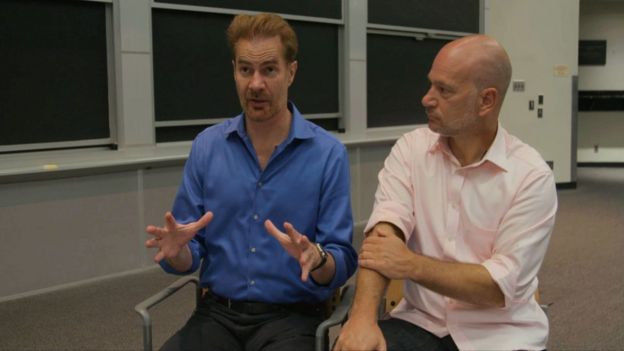
For example, machines are currently dominating the jobs in routine information processing. "Computer," after all, used to be an actual job title of a person who sat and added long rows of numbers. Now it is, well, an actual computer.
On the other hand, jobs such as data scientist didn't used to exist, but because computers have made enormous data sets analyzable, we now have new jobs for people to interpret these huge pools of information. In the tumult of our economy, even as old tasks get automated away, along with demand for their corresponding skills, the economy continues to create new jobs and industries.
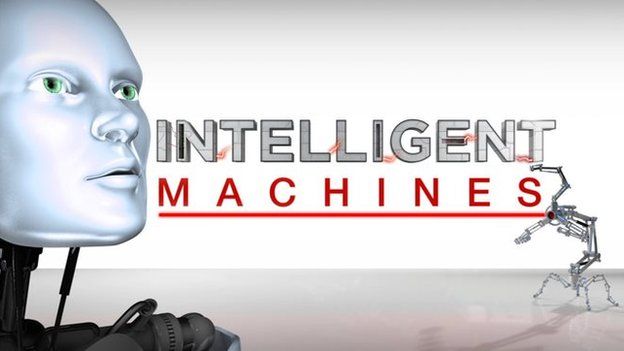
- Video: Exactly what is AI?
- Check how likely it is that a robot will replace you
- Timeline: 15 key stops on the long road to AI
- Fantasy robots v real life
- Explainer: How computers file sports reports
- Intelligent Machines special report
There are three areas where humans have a distinct advantage over machines. These are areas that are key to job creation.
Where humans beat machines
Creative endeavours: These include creative writing, entrepreneurship, and scientific discovery. These can be highly paid and rewarding jobs. There is no better time to be an entrepreneur with an insight than today, because you can use technology to leverage your invention.
Social interactions: Robots do not have the kinds of emotional intelligence that humans have. Motivated people who are sensitive to the needs of others make great managers, leaders, salespeople, negotiators, caretakers, nurses, and teachers. Consider, for example, the idea of a robot giving a half-time pep talk to a high school football team. That would not be inspiring. Recent research makes clear that social skills are increasingly in demand.
Physical dexterity and mobility: If you have ever seen a robot try to pick up a pencil you see how clumsy and slow they are, compared to a human child. Humans have millennia of experience hiking mountains, swimming lakes, and dancing—practice that gives them extraordinary agility and physical dexterity.
 Getty Images
Getty Images
Jobs that depend on these kinds of skills and experiences, such as gardening and housekeeping, are jobs that robots are not good at. Some of these jobs are not always highly paid, but it is unlikely that a robot will soon take them over. However, our friends in robotics are working hard at getting better all the time, so this last category is the one most likely to change.
From an economic perspective: what should workers and governments do?
Our economic data make it clear that we are not doing as well as we should be at creating jobs and raising wages. Corporations, workers and government can work together to find solutions to this problem.
The percentage of prime working age adults in the US with jobs is at a 30-year low, hourly wage growth is slow by historic standards, and real median household income is no higher than it was 20 years ago.
Workers, for their part, have to be strategic and aim for the jobs least likely to be overtaken by robots or other machines. They have to commit to a lifetime of practicing and updating their skills by, for example, taking extra courses online and in classrooms. Lifetime learning and continued training and retraining are key.
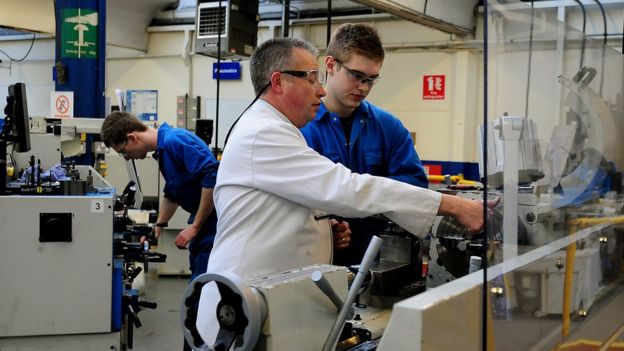 PA
PA
Governments, for their part, need to create a climate where entrepreneurs can flourish, because new ventures create new jobs. There is troubling evidence that entrepreneurship is on the decline. This needs to change.
The answer to the new and growing workforce of robots is not to slow the pace of technological progress, but to speed up our institutions so that entrepreneurs, managers and workers alike can thrive.
Erik Brynjolfsson, a professor at the MIT Sloan School of Management and Andrew McAfee, a scientist there, are the co-authors of The Second Machine Age: Work, Progress, and Prosperity in a Time of Brilliant Technologies.
Brynjolfsson and McAfee: The jobs that AI can't replace - BBC News
Intelligent Machines: The jobs robots will steal first
- 14 September 2015
- Technology
 Thinkstock
Thinkstock
If you are sitting at a desk, driving a taxi or carrying a hod, stop for a moment and ask: could a robot or machine do this job better?
The answer, unfortunately for you, is probably - yes.
The debate about whether machines will eliminate the need for human employment is no longer just academic.
Boston Consulting Group predicts that by 2025, up to a quarter of jobs will be replaced by either smart software or robots, while a study from Oxford University has suggested that 35% of existing UK jobs are at risk of automation in the next 20 years.
Office workers who do repetitive jobs such as writing reports or drawing up spreadsheets are easily replaced with software but what other jobs are under threat? The BBC looks at some of the jobs that are already being done by machines.

TAXI DRIVERS
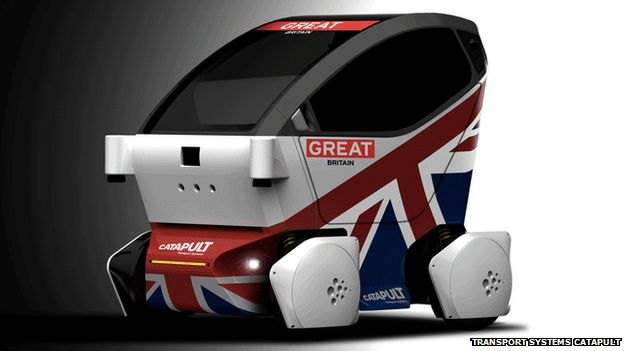 Transport Systems Catapult
Transport Systems Catapult
Taxi drivers in cities around the world are currently embroiled in rows with Uber - the app-based, on-demand service whose drivers, they argue, are subject to less regulation than them.
But Uber, along with most of the major car manufacturers and Google, is already looking beyond a rival service to one that gets rid of the driver altogether.
As chief executive Travis Kalanick puts it - the service would be a whole lot cheaper if you weren't "paying for that other dude in the car".
Later this year, automated taxi pods will start running on the streets of England's Milton Keynes, offering rides around the town. The UK government is updating the highway code to take account of driverless cars.
For the moment though "the other dude in the car" is in defiant mood.
Steve McNamara, head of the Licensed Taxi Drivers Association told the BBC that driverless cars didn't threaten his job.
"Autonomous vehicles will need primary legislation changes to operate on UK roads, the technology is in its infancy and untried and tested in busy urban environments, it ain't happening for many a year. In reality it is doubtful if autonomous cars could ever work alongside conventionally driven vehicles."

FACTORY WORKERS
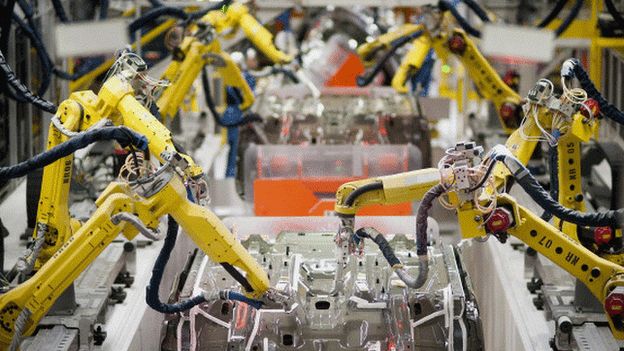 Getty Images
Getty Images
In China, humans are already building robots that will ultimately take their jobs.
The first robot-only factory is being built in China's Dongguan factory city.
The factory, owned by Sehnzhen Evenwin Precision Technology, aims to reduce the current workforce of 1,800 by 90%, according to Chen Zingui, chairman of the board.
But Chinese ambitions for a robot workforce go much further.
Since September last year, a total of 505 factories across Dongguan have invested 4.2bn yuan (£430m) in robots, aiming to replace more than 30,000 workers, according to the Dongguan Economy and Information Technology Bureau.
Foxconn, maker of electronic devices such as Apple's iPhone, also plans a robot army although its ambitions are slightly more modest - aiming for a 30% robot workforce in the next five years.
JOURNALISTS
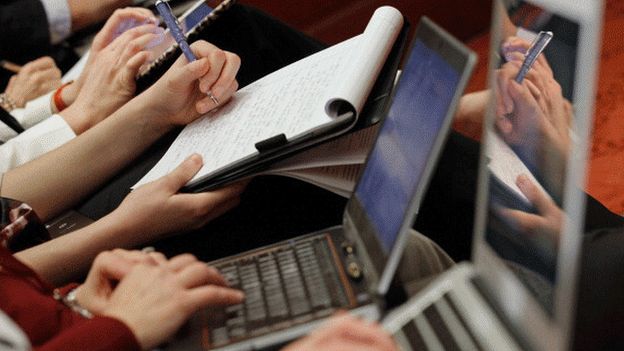 Getty Images
Getty Images
The chances are if you have recently read a corporate earning report on Forbes or a sports story on AP, it was written by a robot.
Companies such as Narrative Science offer software such as Quill that is able to take data and turn it into something understandable.
Quill writes company reports ahead of earnings announcements and Narrative Science claims this means Forbes can now offer this sort of report for thousands of companies rather than just the handful that could be written up by a human journalist.
Narrative Science chief scientist Kristian Hammond has previously said that in 15 years' time, 90% of news will be written by machines but, he told the BBC, that didn't mean that 90% of journalist jobs would go.
"It means that the journalists can extend their reach. The world of news will expand," he said.
"The journalists will not be generating stories from data. That unambiguous, not-open-to-interpretation stuff will be done by machines."

DOCTORS
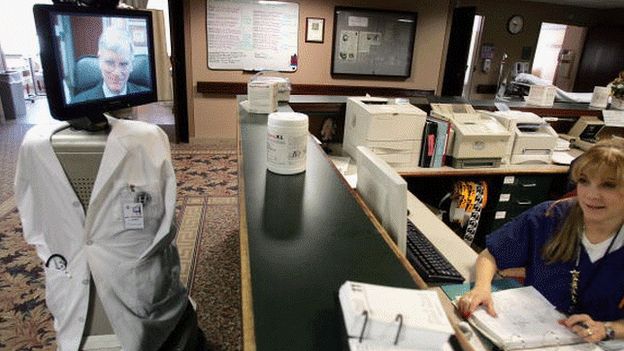 Getty Images
Getty Images
A robot may not yet have a good bedside manner but it is pretty good at wading through huge reams of data to find possible treatments for diseases.
IBM's supercomputer Watson is teaming up with a dozen hospitals in the US, offering advice on the best treatments for a range of cancers. Using vision software developed by the firm, it is also helping to spot early-stage skin cancers.
And robots have for years been helping doctors perform surgery - at Guy's and St Thomas' NHS Foundation Trust, for example, robots assist doctors with keyhole kidney surgery. Speed is a crucial factor in the success of such operations and the robots are able to sew blood vessels connecting donor kidneys far more quickly than humans.
Robotic surgery is not foolproof though and a recent safety report found that machine-based surgeries were linked to at least 144 deaths in the US over the last decade.
For the moment, robot and man work side-by-side in medicine but that may not always be the case.
"Doctors in particular aren't likely to graciously cede control of their patients' treatment to synthetic intellects," writes Jerry Kaplan in his book Humans Need Not Apply.
"But eventually, when outcomes demonstrate that this is the better option, patients will demand to see the attentive robot, not the overworked doctor, for a fraction of the fee."

COCKTAIL WAITER

Royal Caribbean's luxury cruise ship Anthem of the Seas has recently installed a robotic bar - Shakr Makr - a machine developed at MIT a few years ago.
Drinks can be ordered via a tablet device and users aren't limited to a set menu - they can, if they are brave enough, create their own cocktail.
The robotic arm mixes the cocktail and pours it into a plastic (to avoid breakages) glass that sits in a trough (its pouring skills aren't always precise). And it does so with some panache - filling the cocktail mixer from optics above it and even shaking it before pouring.
In the interests of science, the BBC tested two from the robotic bar and two from a traditional cocktail waiter in a conventional bar on board the ship.
The robotic concoctions did not actually taste that good - they lacked the fine-tuning, like the fresh twist of lemon that the human bartender added.
Life's a beach?
 Thinkstock
Thinkstock
These examples illustrate both the possibilities and limitations of robotic workers but each one could easily have been replaced with others - lorry drivers, hotel workers, lawyers - all of which have robot versions that are actually being used today.
It raises the question - what will humans do when their skills are surplus to requirements?
Martin Ford - author of Rise of the Robots - thinks we face mass unemployment and economic collapse unless we make radical changes, such as offering humans a basic wage, a guaranteed income.
What humans will actually do with all their free time is harder to assess - spend more time at the beach think some, while others argue for the need to keep the human touch in the work place.
"I strongly hope that teachers, doctors and judges will remain human because sometimes you need someone to talk to," Nello Cristianini, professor of AI at Bristol University told the BBC.
After all, the work we do currently is as much about talking as it is about getting a job done efficiently and, whatever they may be good at, robots engaging in office banter isn't happening any time soon.
Intelligent Machines: The jobs robots will steal first - BBC News
Does "Creative Destruction" Only Help the Rich? | Foundation for Economic Education
And from a year ago:
Ludd vs. Schumpeter | Foundation for Economic Education
See also:
Will Robots Put Everyone Out of Work? | Foundation for Economic Education
Ex Machina and Human Action | Foundation for Economic Education
#45 – “Robots and Computerization Cause Unemployment” | Foundation for Economic Education
.
.
.





No comments:
Post a Comment